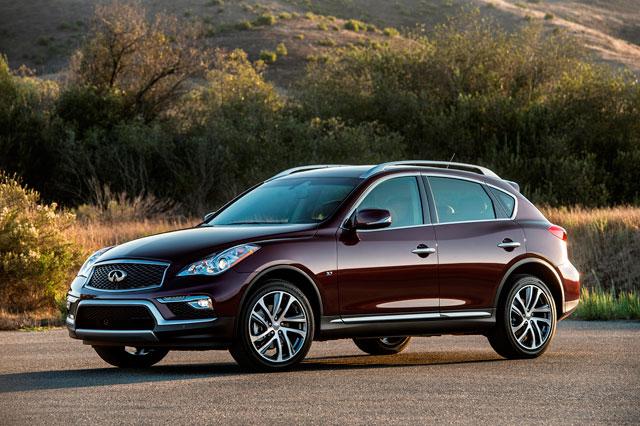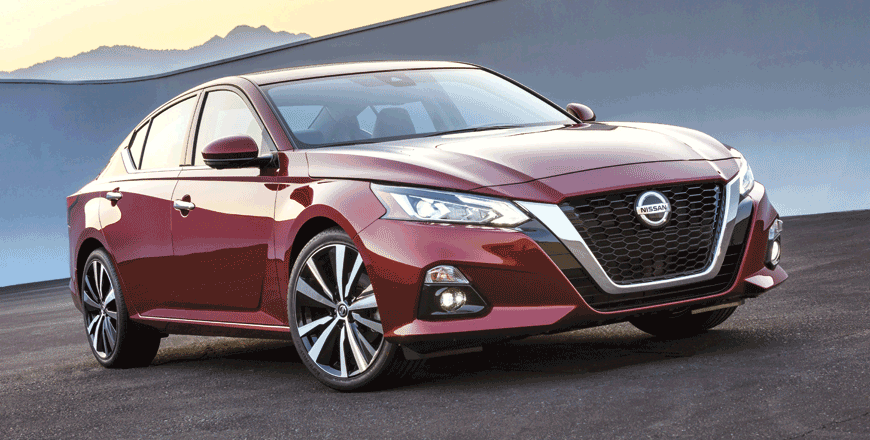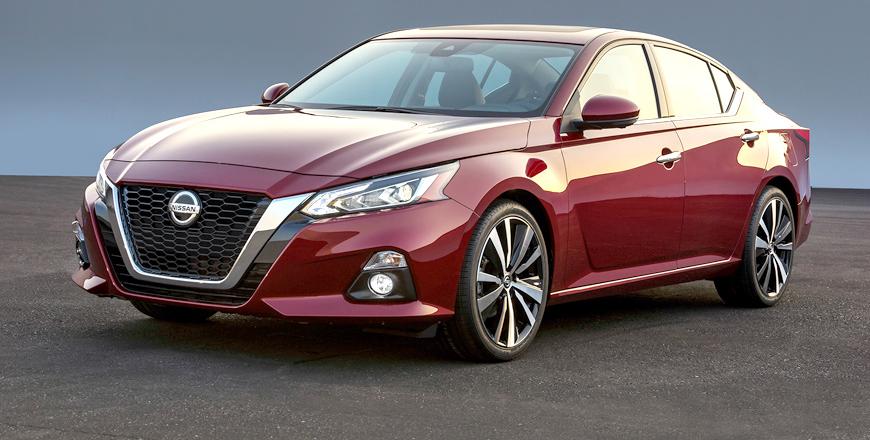You are here
Infiniti QX50 2.0T AWD: Where radical converges with conventional
By Ghaith Madadha - Aug 23,2021 - Last updated at Aug 23,2021

Photos courtesy of Infiniti
Introduced for the 2019 model year, the second generation incarnation of Infiniti’s compact premium crossover is evolutionary in that it is a larger, more luxurious and noticeably more assertively styled vehicle filling the same niche. Noted for being the first production vehicle with a radically innovative variable compression engine, the new QX50 is, however, a more conformist and conventional vehicle in terms of architecture and layout, and is also a radical departure from its predecessor’s more exotic and sporting front-mid engine and rear-drive oriented layout.
Sportier style
A more practical car with improved packaging, more advanced equipment and technology, and significantly enhanced fuel efficiency, the new QX50 is also an arguably better looking car in terms of styling detail and body surfacing, next to its predecessor’s perhaps quirkier headlight and rear bumper design details. By comparison, the previous QX50 was blessed with elegantly sporty classic long bonnet proportions, derived from the front-mid engine architecture it shared with other Infiniti SUVs and saloons, and in truncated form, even with Nissan’s 370Z sports car.
Built on a front-drive based Nissan-Renault all-wheel-drive platform shared with the Nissan X-Trail, the new QX50 might not have the same graceful proportions and chassis balance as its predecessor, but is better at being a practical crossover SUV. Its design features a higher waistline and more complex yet evocatively wavy lines and sculpted surfacing. With a taller bonnet with muscular twin ridges, the chiselled new QX50 is decidedly more assertive, with a dramatic fascia incorporating slim moody headlights, deep lower side intakes and a large, hungry grille design.
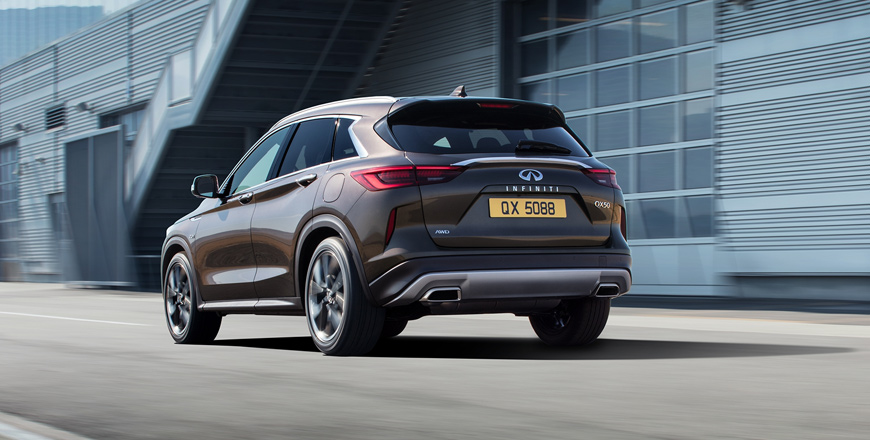
Eager innovation
Significantly downsized from its predecessor’s smooth and rewardingly eager revving but thirsty naturally-aspirated in-line 3.7-litre V6, the new QX50 2.0T’s sole engine is instead a highly innovative and efficient turbocharged 2-litre transverse 4-cylinder engine with dual direct and port fuel injection. The new QX50’s pièce de résistance is its world’s first variable engine compression system. Using a complex multi-link connecting rod set-up, which seamlessly varies the engine’s compression ratio (and capacity and stroke length) to 14:1 by allowing the piston to travel higher and attain higher combustion efficiency.
To avoid the premature combustion or ‘knocking’ that high compression engines are susceptible to in certain conditions, the QX50’s engine alternatively lowers compression to 8:1, at which point it produces more turbocharged power and torque output. Delivering comparable output as its larger displacement predecessor, it produces 268BHP at 5,600rpm and a brawny 280lb/ft torque throughout a broad and ever-accessible 1,600-4,800rpm range. Quick to spool and with negligible turbo lag the hefty 1,792kg new QX50 is estimated to provide similarly brisk 6.5-second 0-100km/h acceleration.
Smooth sensibility
Responsive from standstill and smooth running, the QX50 engine’s muscularly versatile mid-range torque sweet spot is complemented by eager-revving top-end delivery. Peakier than many turbo engines, the QX50’s variable compression engine feels exciting, engaging and ever-willing, despite revving lower than its predecessor. Channelling power to the front wheels and to the rear as needed, the QX50’s silky smooth continually variable transmission (CVT) system fine tunes ratios for best efficiency. If not as driver engaging as a traditional gearbox, the QX50’s CVT is among the best of such systems.
Seamlessly smooth changing ratios, the QX50’s CVT also seems to better match revs to ratios for a more natural driving feel, and is more willing to let the engine rev higher than most CVTs, with less of less of the ‘slingshot’ feel typical to many such transmissions, where the car seems to play catch up with engine revs. The QX50’s CVT also features a manual mode, where it simulates a traditional automatic gearbox with well-maintained pre-set ratios. Similarly smooth is the QX50’s comfortably forgiving and reassuringly stable highway ride quality.
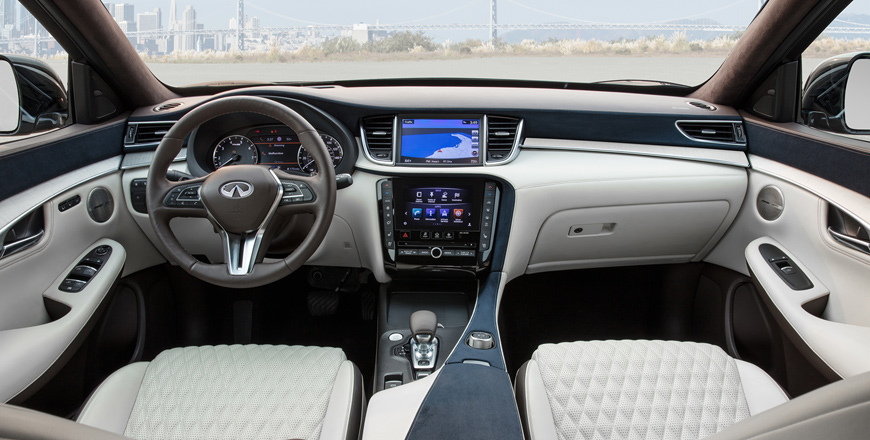
Refined ride
Finding a good balance between forgiving and firm in its damper and spring rates, the new QX50 may not have the same sporting architectural DNA of the old model, but is nevertheless a dynamically capable and reassuring drive with light, direct and quick steering, tidy turn-in and good cornering body control for its class. More agile than expected through winding roads, the QX50 feels composed and confident, especially when accelerating out of a corner to send power to the rear and enhance grip, rather than relying on electronic stability controls.
Well-absorbing lumps, bumps and potholes, the QX50 is comfortable and smooth with excellent cabin refinement. Well-appointed with soft textured surfaces, and leathers, its cabin has a well-assembled and premium quality. A practical crossover with easy cabin access, generous passenger and luggage room, the QX50’s rear seats better accommodate larger occupants than expected. Fresh and user-friendly in design and layouts, its cabin is well-equipped with convenience, safety and infotainment features, and usefully includes a front parking sensor and rear camera to better manoeuvre its now wider, higher and more voluptuously curvy body.
TECHNICAL SPECIFICATIONS
Engine: 2-litre, transverse turbocharged 4-cylinders
Bore x stroke, low/high compression: 84 x 90.1/88.9mm
Compression: Variable, 8:1 — 14:1
Valve-train: 16-valve, DOHC, variable valve timing
Gearbox: Continuously variable transmission (CVT) auto, four-wheel-drive
Final drive ratio: 5.846:1
Power, BHP (PS) [kW]: 268 (272) [200] @5,600rpm
Specific power: 134BHP/litre (approximately)
Power-to-weight: 149.5BHP/tonne
Torque, lb/ft (Nm): 280 (380) @1,600-4,800rpm
Specific torque: 190Nm/litre (approximately)
Torque-to-weight: 212Nm/tonne
Maximum engine speed: 6,000rpm
0-100km/h: approximately 6.5-seconds (estimate)
Fuel economy, combined: 9-litres/100km*
Fuel capacity: 61-litres
Length: 4,691mm
Width: 1,902mm
Height: 1,676mm
Wheelbase: 2,799mm
Track, F/R: 1,635/1,630mm
Aerodynamic drag co-efficiency: 0.32
Approach/break-over/departure angles: 17.2°/19°/23.9°
Ground clearance: 218mm
Head room, F/R: 1,041/993mm
Legroom, F/R: 1,005/983mm
Shoulder room, F/R: 1,470/1,450mm
Hip room, F/R: 1,412/1,366mm
Loading height: 703mm
Kerb weight: 1,792kg
Weight distribution, F/R: 59 per cent/41 per cent
Steering: Electric-assisted, speed sensitive variable rack & pinion
Turning circle (kerb-to-kerb): 11.1-metres
Lock-to-lock: 2.73-turns
Suspension, F/R: MacPherson struts/multi-link
Anti-roll bars, F/R: 27mm/22.5mm
Brakes, F/R: Ventilated discs, 330mm/discs, 308mm
Tyres: 235/55R19
*US Environmental Protection Agency Estimate
Related Articles
Longer, aesthetically revamped and better equipped than ever for 2016, the Infiniti QX50 was first launched in 2007 as the EX model line and
Launched in 2018, the sixth generation Nissan Altima is the most technologically advanced incarnation of the Japanese manufacturer’s popular
A venerable and attainable mid-size middle of the road family saloon that performed well on so many levels, if not necessarily the best on e


